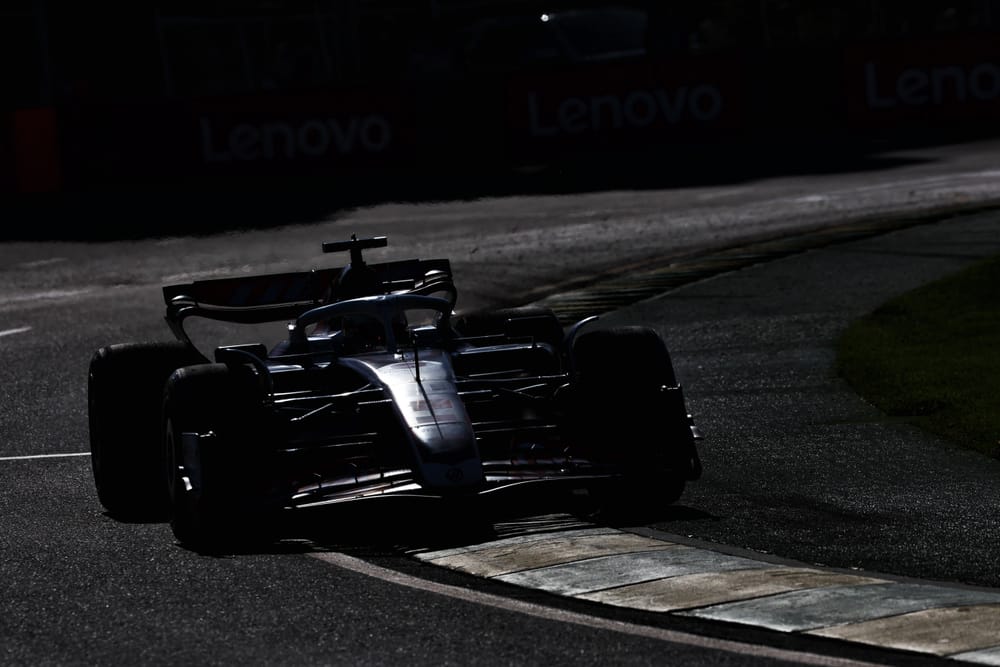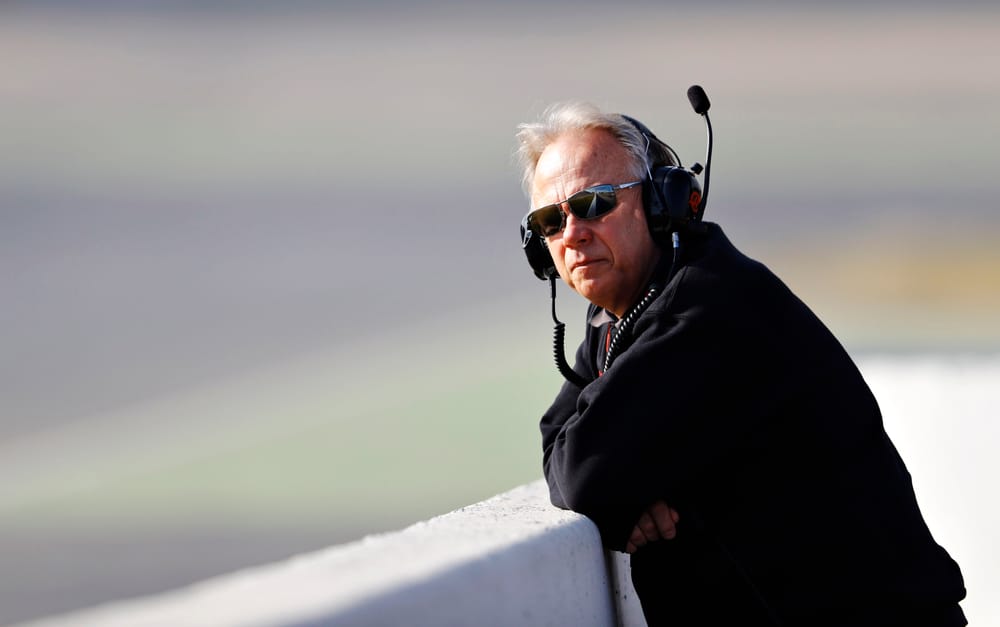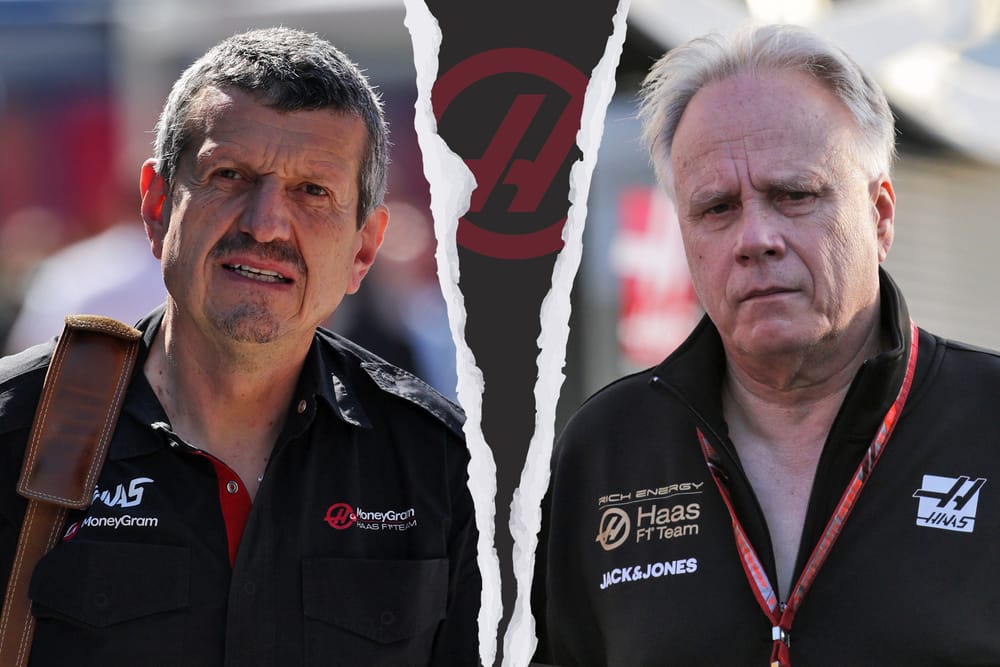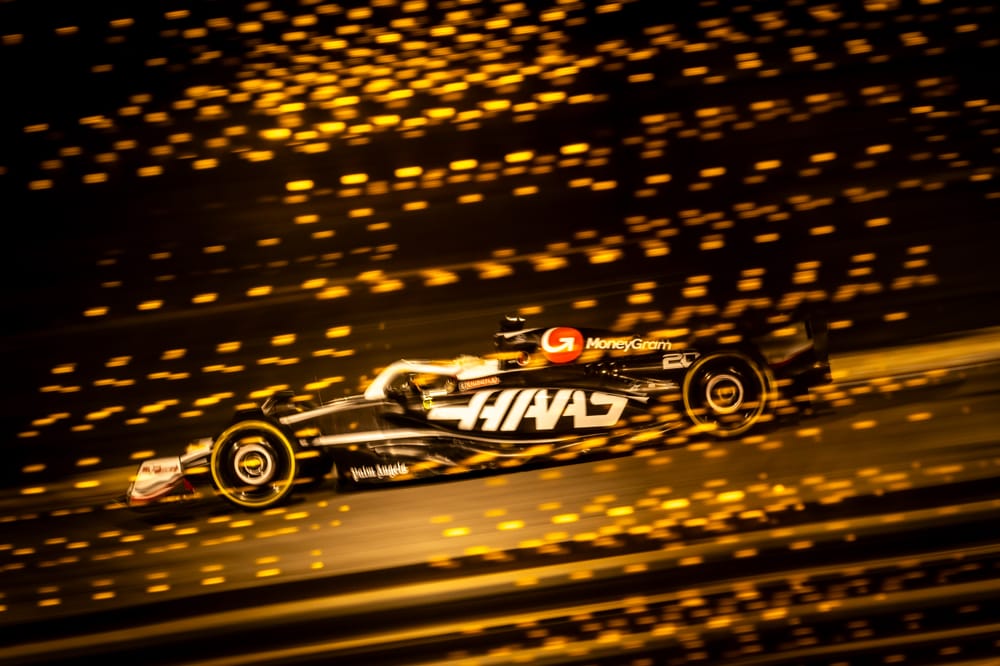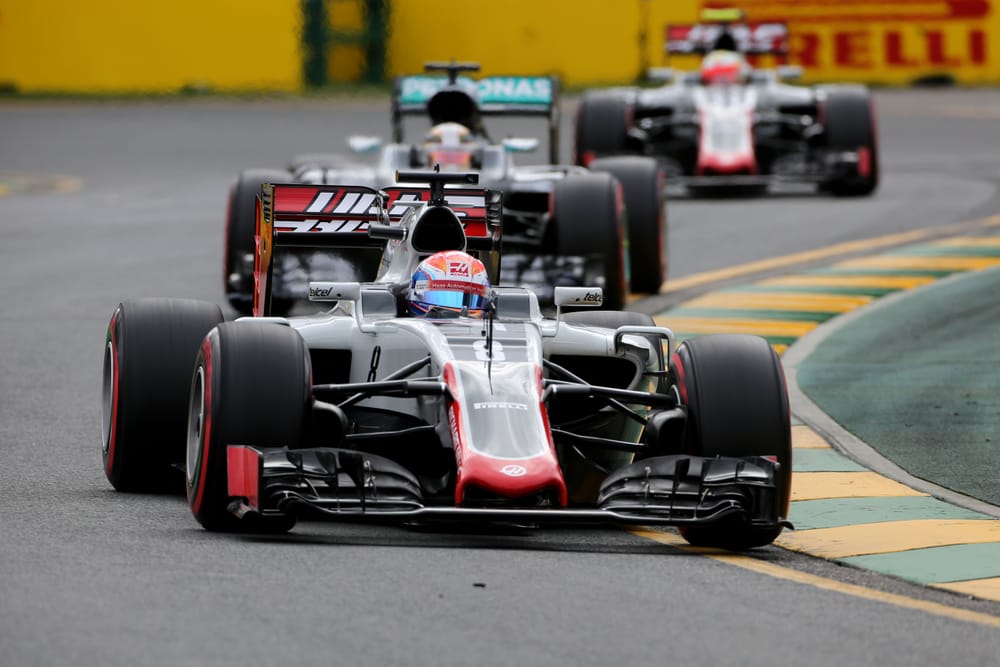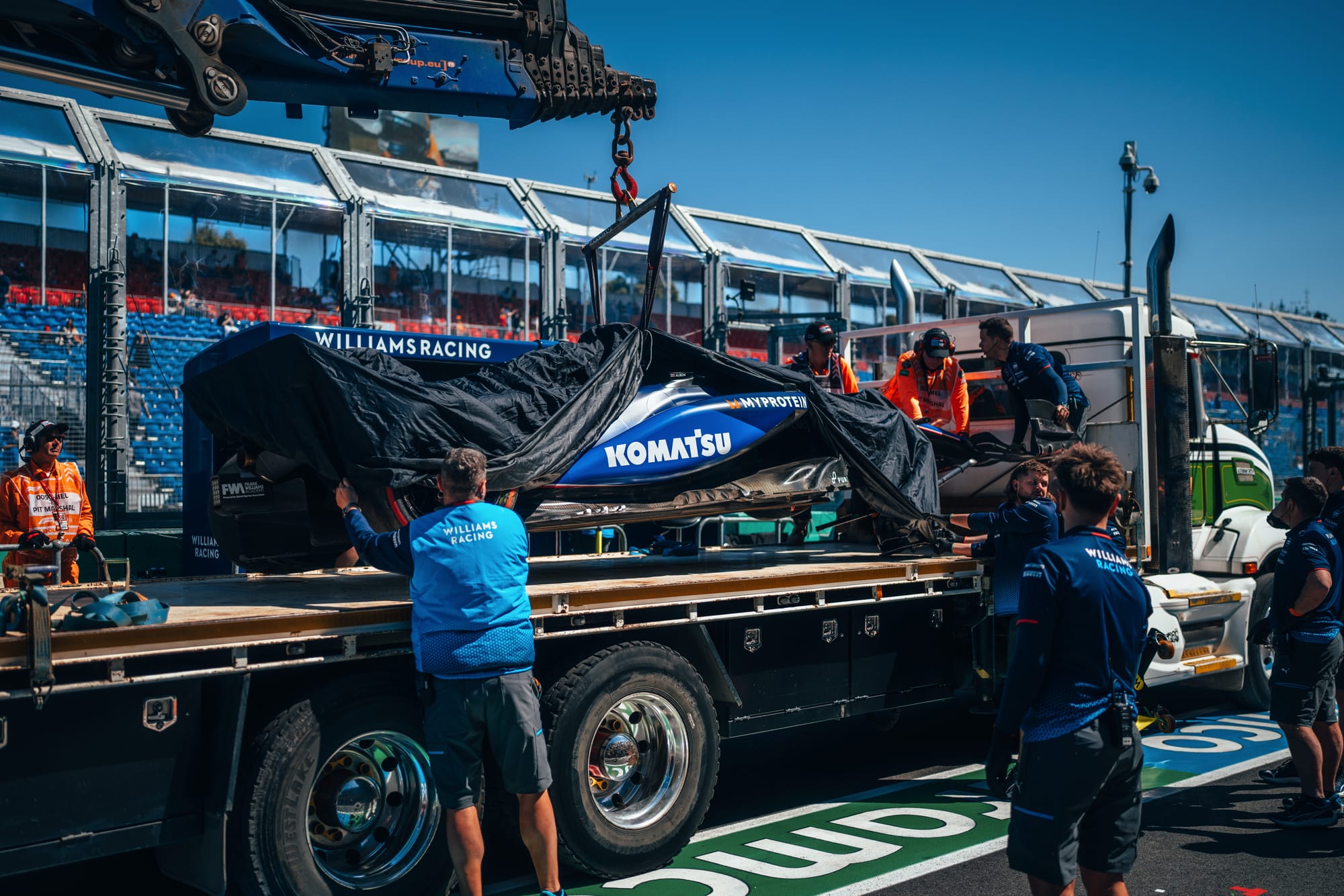Up Next

Public expectations for Haas at the start of 2024 were on the floor when the Formula 1 team’s new leader Ayao Komatsu began his reign repeatedly warning it would be near the back if not outright last.
Three races in, though, and Haas is a perfectly respectable midfield competitor that looks like it has really got a handle on its crippling weakness from last season.
It is seventh in the championship with two points finishes from three events, and the 2023 trend of being mighty on Saturdays and nowhere on Sundays has been eradicated.
The low expectations set by the team itself have been exceeded and the widespread concern that Haas was heading for more trouble seems to have been premature.
But there is a potential caveat: that this may just be a pleasingly confident start to something that will eventually be consumed by the wider problems that risk holding the team back indefinitely.
That bigger picture is what got Komatsu into the job in the first place, after long-time boss Guenther Steiner's exit over the winter following a disagreement with team owner Gene Haas about the team’s medium and long prospects.
Steiner's now given his verdict on his old team's start - and suggested this actually changes nothing because Haas is doing no more than it would have done in the short-term anyway.
JUST AN 'EXCUSE'?
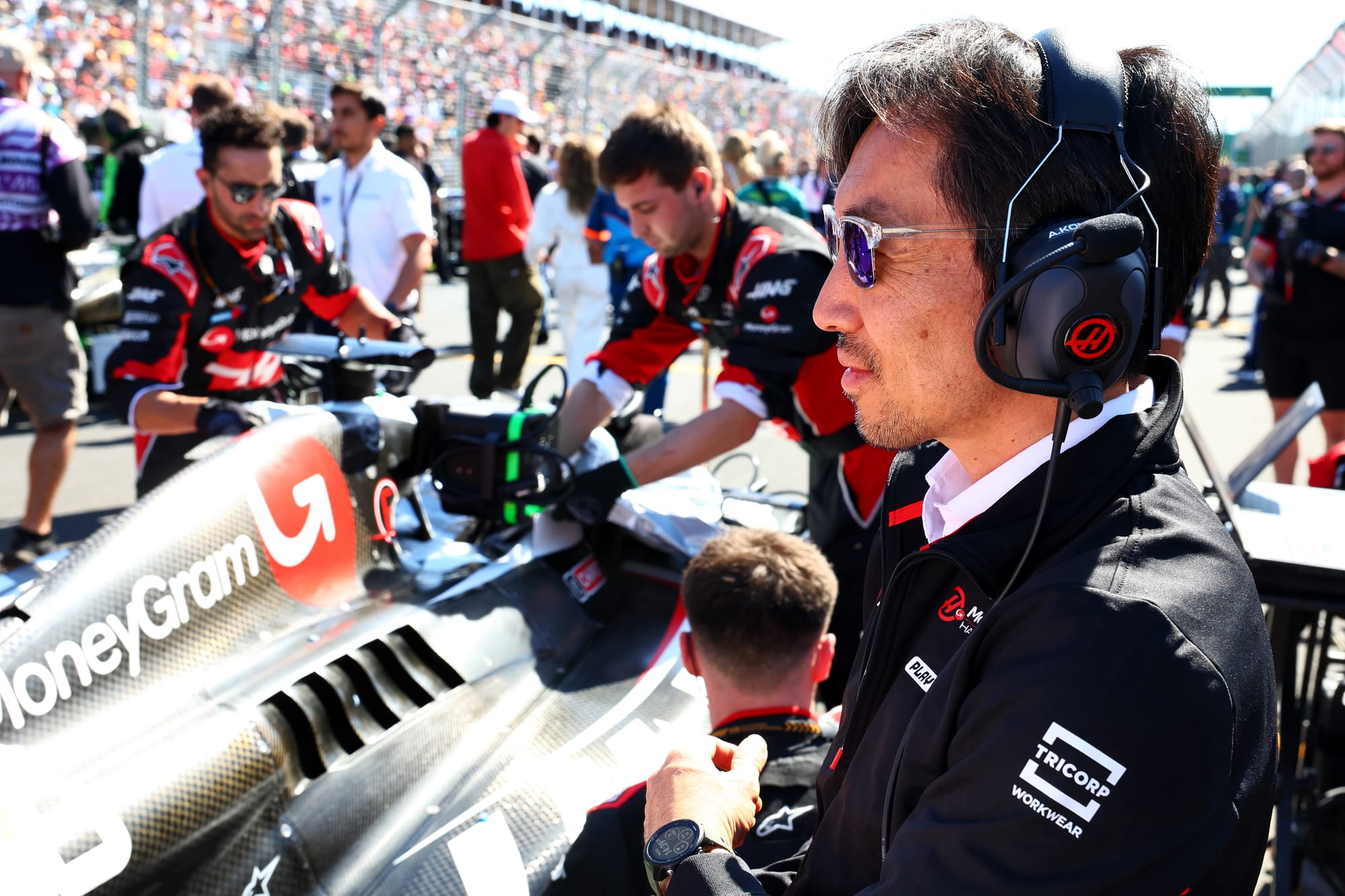
In the short-term, at least, the pessimism from Komatsu and the wider F1 world (including The Race) seems to have been misplaced.
But Steiner, who is piecing together an alternative F1 career with media commitments and a new Miami Grand Prix ambassadorial role, reckons Haas laid things on a little thick.
The VF-24 is, by and large, the same car that Haas was readying when Steiner left the team at the end of December. So, he was aware of the 2024 car’s progress and what could be possible with the launch spec - which has finished 10th in Saudi Arabia and then ninth and 10th in Australia.
This car is an evolution of the significantly upgraded version that appeared towards the end of 2023 in the United States Grand Prix, and while it was underwhelming in that form it has clearly made for a good foundation alongside some other changes that were not possible in-season.
That work was started by ex-technical director Simone Resta, who left the team along with Steiner as part of the winter overhaul.
“The team last year - and I’m not saying 'I', I’m saying the team or Simone Resta - did a good job because the car was done last year, before I left,” Steiner says.
“The car was finished, it was in assembly already. So I think they did a good job. And I always told Gene Haas [this was possible], I actually had it right where they ended up being, because I knew the numbers from the windtunnel where the team should end up.
“In the beginning they played it down to have an excuse for it to start off with and then it was better than they expected. That is, for me, wrong to do.”
Last year’s Haas was very potent in qualifying, particularly in Nico Hulkenberg’s hands. But it shredded its tyres in races with what seemed to be problematic aerodynamic stalls at the rear, causing the car to behave unpredictably and slide around.
It was therefore perfectly plausible for Haas to become a marginal point-scoring team again if it could mitigate that race-day weakness, even if that came at the cost of some qualifying prowess. Lo and behold, with good development work and extremely diligent pre-season preparation in testing under Komatsu’s leadership, Haas seems to have made that step.
Steiner’s implication is that Komatsu went for a strategy of underpromising then overdelivering simply by scoring the kind of results that were always possible if things came together as they had the potential to.
WHERE STEINER AND KOMATSU DIFFER
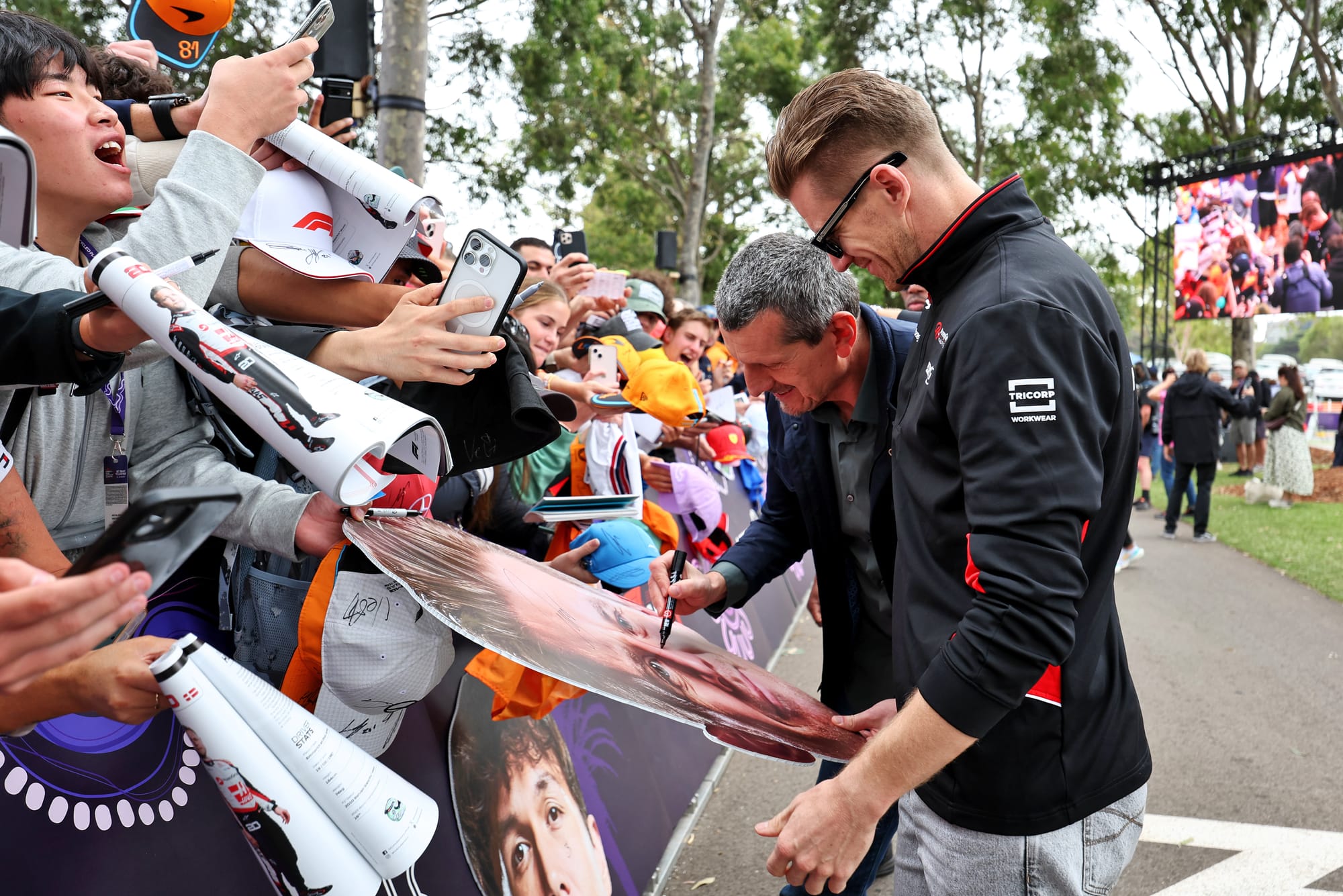
If Steiner sounds bitter, he isn’t. In making his point about Haas's start to life without him, his tone was always quite light, and he seemed perfectly sincere when he insisted he is “very happy” that the team is scoring points and has “no bad feelings” about it.
“I’m actually pretty happy when they score points because I know the technical team in Italy did a good job last year,” says Steiner. “They worked very, very hard to produce the car which is running now.
“Only time will tell what’s happening in the future.”
It is also not hard to imagine that these results did genuinely look on the cards over the winter because this is quite a Haas way of starting the season.
OK, it is at the lower end of the team’s normal range, and nowhere near as grand as its more blockbuster beginnings.
But it is also better than the lows of 2020 and 2021. And this is a more competitive F1 midfield than what Haas was able to profit from at the start of seasons like 2016 and 2018.
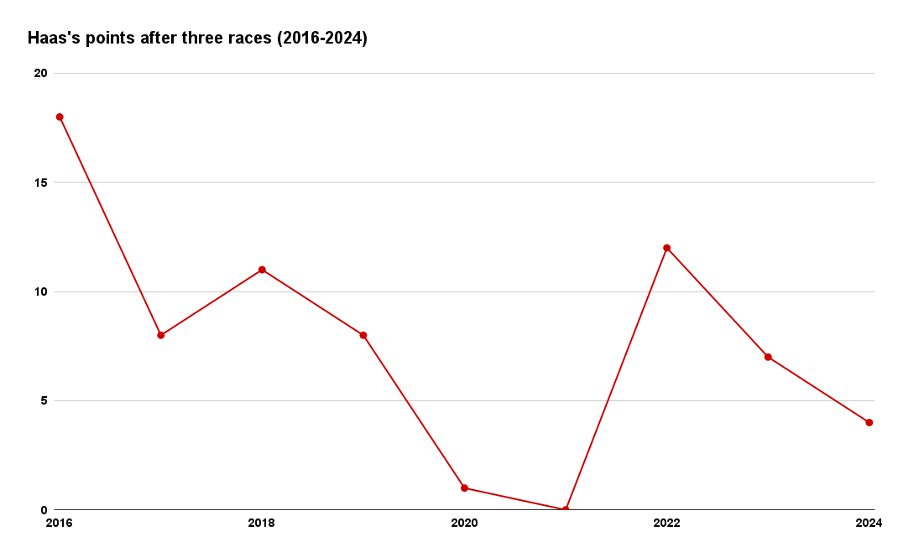
So, Steiner's right. This is nothing particularly special. It's a good step from last year, certainly, but it is within Haas's capabilities (especially with the likes of Williams and Alpine dropping the ball with their respective car builds and Sauber seemingly unable to do normal pitstops anymore).
Komatsu still says he would have “absolutely” taken this points return in pre-season, even though he is still critical of areas where the team could be doing even better.
And there has not been any trace of this being disingenuous - either now, or when he took the role. His concern about the team’s short-term prospects but backing of its longer-term potential (which is literally the inverse of Steiner’s position) has always sounded sincere.
Komatsu being engineering-focused also means he is more likely to be cautious, prudent and even pessimistic, whereas Steiner calls it as he sees it - always has - and had big ambitions that he held his team to. Maybe that created a tendency to get carried away with a more optimistic perspective.
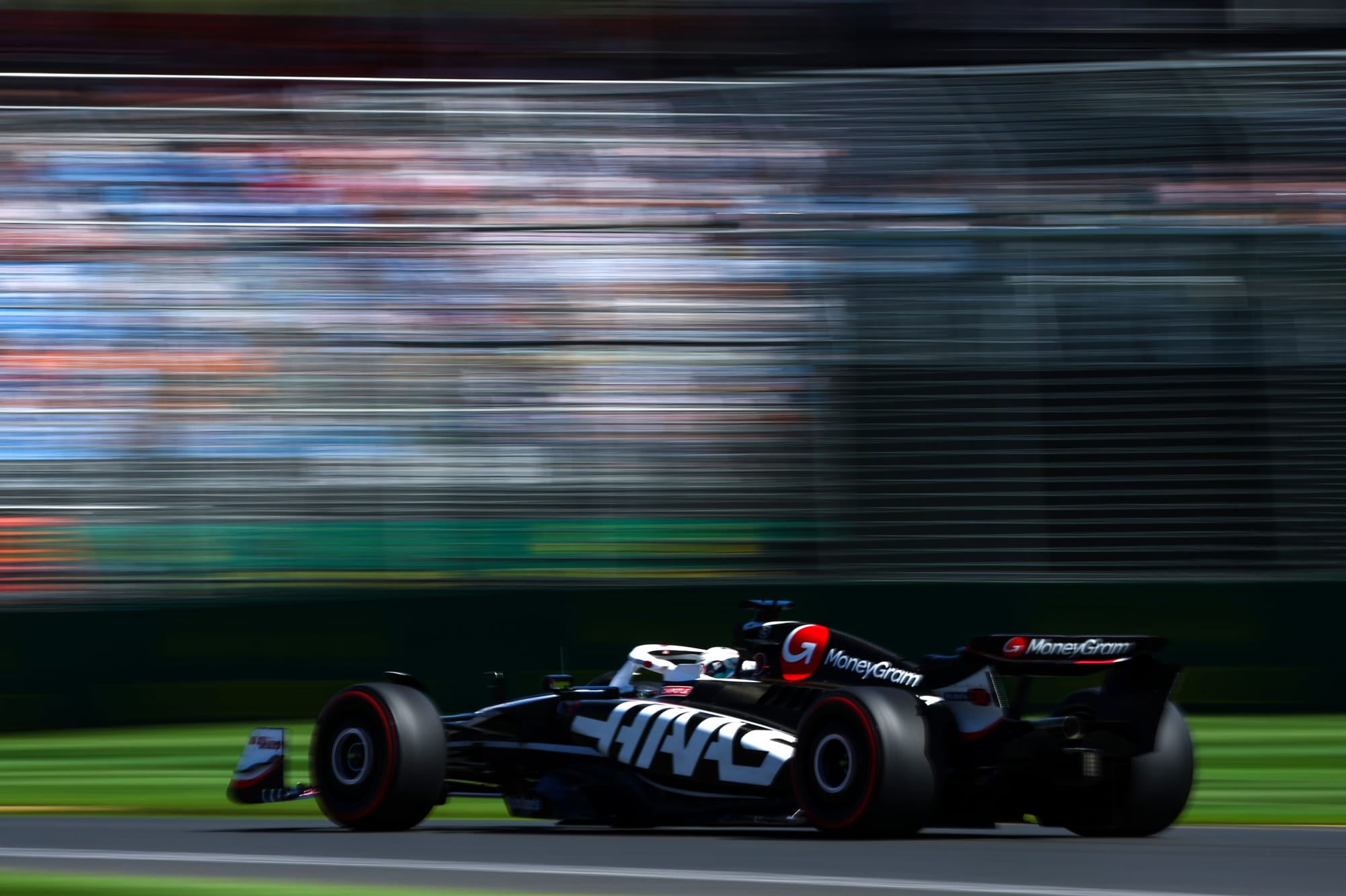
From there you can see why they would have different outlooks and approach things differently in the media. It’s safe to assume that were Steiner still in charge, Haas would have been openly aiming for better results than what Komatsu was initially forecasting.
“But it’s not about this year,” Steiner says, referring to his wider concern about Haas’s F1 future under a team owner reluctant to invest in the way Steiner felt was necessary. “It’s about the mid-term.
“You can go from year to year and every year you can say, ‘Oh we are bad’ and then you do better than you are.”
This probably reflects the fundamental difference of opinion between Steiner and Komatsu. There’s a reason Steiner left and Komatsu’s now in charge - one buys into the Gene Haas argument that the team was underdelivering with its existing resources, and one does not.
WHY KOMATSU'S DEMANDING MORE
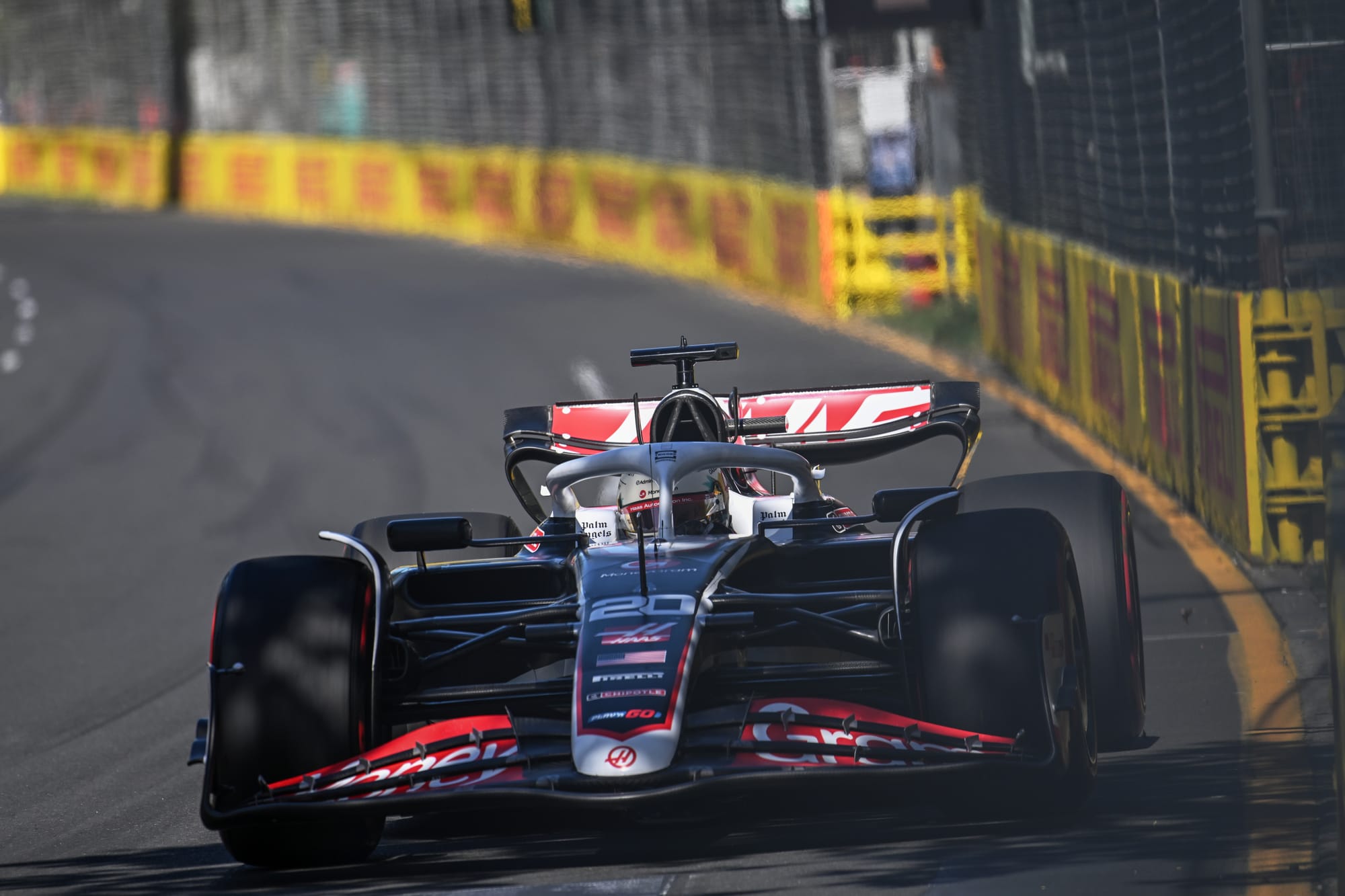
As Steiner alluded to, it is only over a much longer time period we will see whether Haas regresses to low expectations or not.
Steiner’s concerns, and ours, and those of others in F1, have always been linked to where the ceiling is for Haas in its current form and without fresh investment from its ownership.
That cannot be determined from three races, no matter how encouraging they’ve been for the team and its encouraging new leader - who, it must be said, is demanding even more of his team rather than cashing in on any early ‘look how much better this is than we thought!’ fanfare.
Komatsu feels that Haas overreacted to undercut threats in two of the three races so far, which potentially cost the team even better results. And that annoys him because - even prior to Yuki Tsunoda inheriting seventh in the Australian Grand Prix when Fernando Alonso was penalised and scoring more points for the rival RB team - it had a direct impact on the championship standings.
“We cannot keep making those mistakes when everything in the midfield is so tight,” says Komatsu.
“Tsunoda scored four points - so OK, we are equal on the points [before the result changed].
“But because he's got P8, they are P6 and we are P7, and that could be the difference at the end of the year for one championship position.
“That's huge. So we’ve really got to be perfect.”
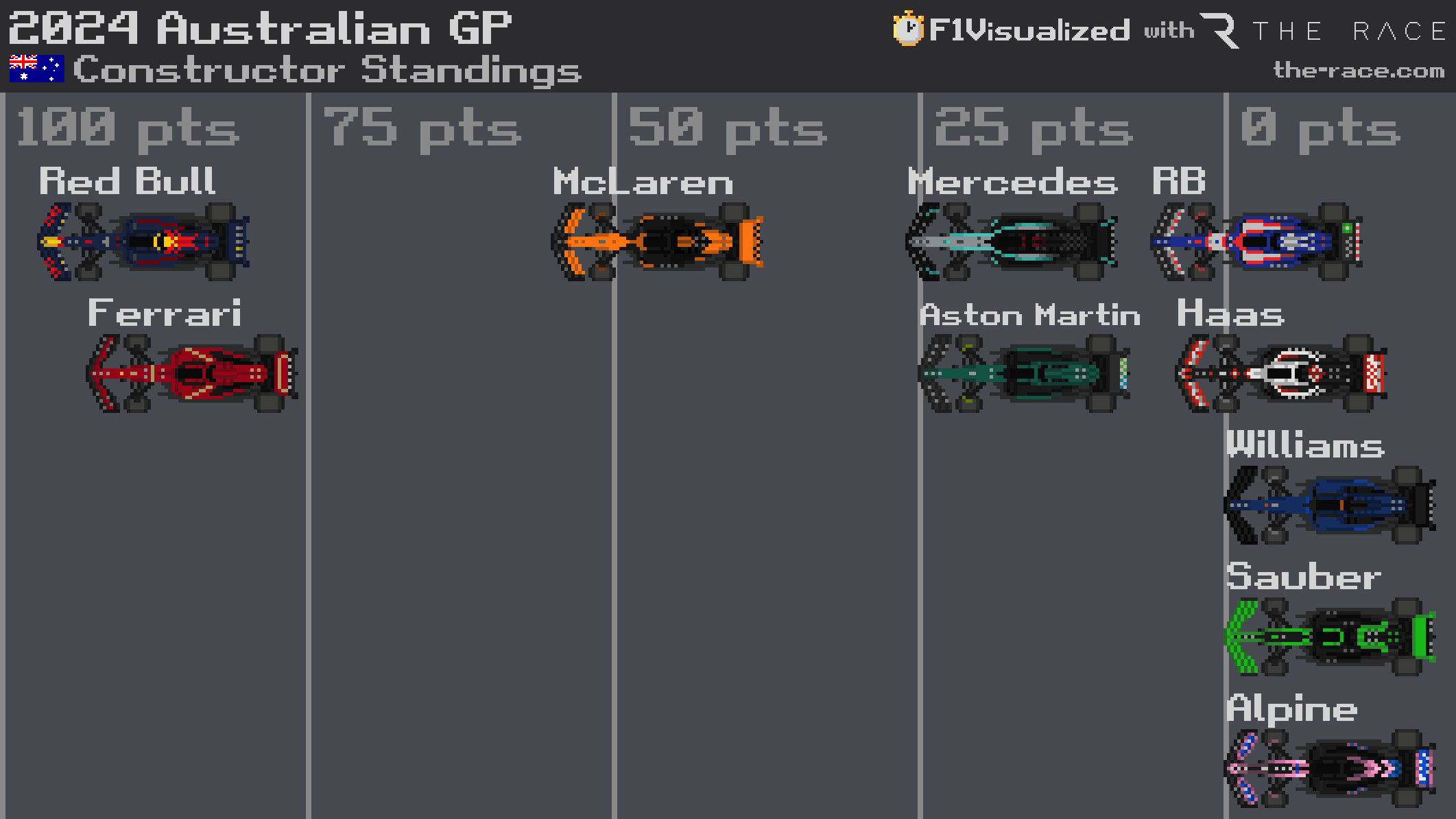
The situation looked slightly different after Komatsu had spoken to the media on Sunday evening in Melbourne, with RB now two points clear of Haas rather than ahead on countback. But the principle is still the same. And it is what Haas achieves from here, rather than how it handled its pre-season messaging and whether it’s ‘really’ overachieving early in the season, that will matter most.
“My mentality is that you’ve always got to get the best out of what you've got,” says Komatsu.
“So, OK, great that we are in a slightly better position.
“But it's not a reason to be complacent. We’ve got to capitalise on it.
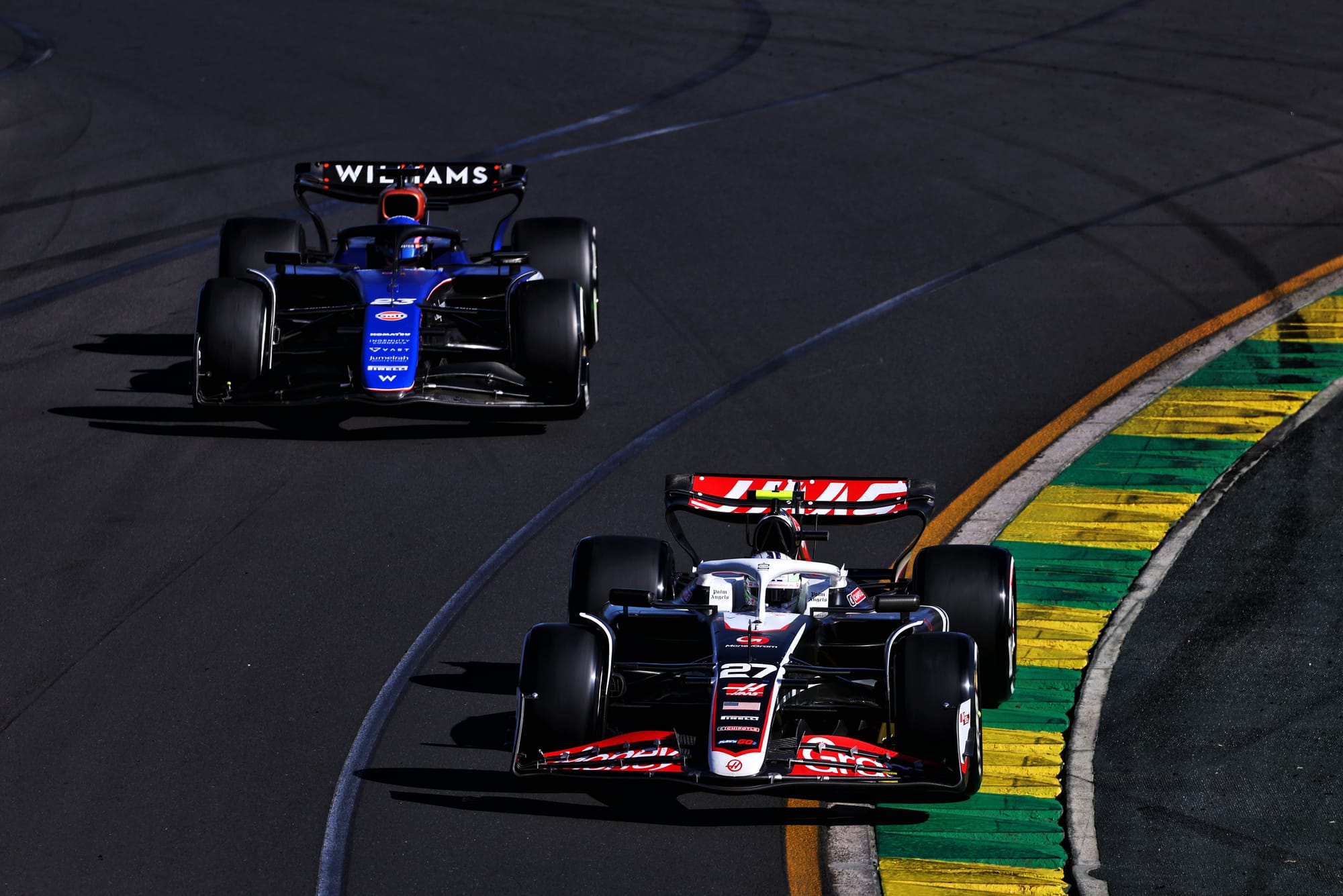
“Sooner or later, I'm sure Williams will sort out their problems. They’re already quicker than us in qualifying. I’m sure their race pace will be better at some point. Alpine are not too far away from us in qualifying, I'm sure they are going to improve their cars.
“You’ve got to maximise every single opportunity. Otherwise one championship position is very easy to be won or lost.”


